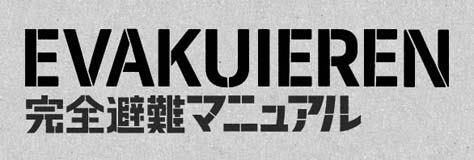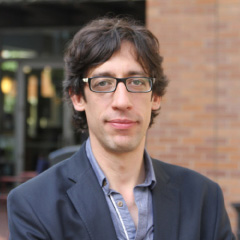Difference between revisions of "Frankfurt evakuieren:About"
| Line 65: | Line 65: | ||
The Argentinian author and theater director '''Mariano Pensotti''' (born in 1973 and living in Buenos Aires) worked in the field of video and film before he turned to theater. In 2010, he created the piece “Sometimes I think, I can see you”, which poetically reflects public life in a contemporary metropolis. | The Argentinian author and theater director '''Mariano Pensotti''' (born in 1973 and living in Buenos Aires) worked in the field of video and film before he turned to theater. In 2010, he created the piece “Sometimes I think, I can see you”, which poetically reflects public life in a contemporary metropolis. | ||
<div class="tour-a"><div class="location-list"> | <div class="tour-a"><div class="location-list"> | ||
| − | *[[A03| | + | *[[A03|Mainz Hbf<span>(27. Sep – 2. Okt 2014)</span>]] |
</div></div> | </div></div> | ||
</div> | </div> | ||
| Line 81: | Line 81: | ||
In 1997, the media theorists, radio-, theater- and performance artists Ole Frahm, Michael Hüner and Torsten Michaelson formed the group '''LIGNA'''. Since then, they have experimented with the medium of radio in the increasingly controlled public space, from which they created their “Radioballet”. The works of LIGNA have been awarded with international prizes and are featured in festivals worldwide. | In 1997, the media theorists, radio-, theater- and performance artists Ole Frahm, Michael Hüner and Torsten Michaelson formed the group '''LIGNA'''. Since then, they have experimented with the medium of radio in the increasingly controlled public space, from which they created their “Radioballet”. The works of LIGNA have been awarded with international prizes and are featured in festivals worldwide. | ||
<div class="tour-d"><div class="location-list"> | <div class="tour-d"><div class="location-list"> | ||
| − | *[[D02| | + | *[[D02|Mainz Hbf / Ostendstraße / Rebstöcker Straße / Hauptwache / Konstablerwache<span>(12. Sep - 05. Okt 2014)</span>]] |
</div></div> | </div></div> | ||
</div> | </div> | ||
| Line 98: | Line 98: | ||
<div class="tour-b"><div class="location-list"> | <div class="tour-b"><div class="location-list"> | ||
| − | *[[B03| | + | *[[B03|Griesheim<span>(13. Sep – 5. Okt 2014)</span>]] |
</div></div> | </div></div> | ||
</div> | </div> | ||
| Line 115: | Line 115: | ||
<div class="tour-a"><div class="location-list"> | <div class="tour-a"><div class="location-list"> | ||
| − | *[[A06| | + | *[[A06|Mainz Römisches Theater<span>(14. Sep – 5. Okt 2014)</span>]] |
</div></div> | </div></div> | ||
</div> | </div> | ||
| Line 131: | Line 131: | ||
Since 2004, the video artist '''Chris Kondek''' (born in 1962 in Boston and living in Berlin), and the journalist Christiane Kühl (born in 1966 in Kiel and living in Berlin), develop theatrical works in a vivid confrontation with the financial world. Together with the photographer Klaus Weddig (born in 1960 in Clausthal and living in Frankfurt and in the frame of the Detroit Project of the Schauspiel Bochum, they documented Cicero’s theses "Sieben Strategien gelungenen Überlebens in der geldlosen Gesellschaft" (Seven Strategies to Successfully Survive in a Moneyless Society) in Bochum. | Since 2004, the video artist '''Chris Kondek''' (born in 1962 in Boston and living in Berlin), and the journalist Christiane Kühl (born in 1966 in Kiel and living in Berlin), develop theatrical works in a vivid confrontation with the financial world. Together with the photographer Klaus Weddig (born in 1960 in Clausthal and living in Frankfurt and in the frame of the Detroit Project of the Schauspiel Bochum, they documented Cicero’s theses "Sieben Strategien gelungenen Überlebens in der geldlosen Gesellschaft" (Seven Strategies to Successfully Survive in a Moneyless Society) in Bochum. | ||
<div class="tour-c"><div class="location-list"> | <div class="tour-c"><div class="location-list"> | ||
| − | *[[C07| | + | *[[C07|Rüsselsheim<span>(12. Sep – 5. Okt 2014)</span>]] |
</div></div> | </div></div> | ||
</div> | </div> | ||
| Line 148: | Line 148: | ||
<div class="tour-c"><div class="location-list"> | <div class="tour-c"><div class="location-list"> | ||
| − | *[[C06| | + | *[[C06|Zobelstraße / Frankfurt Hbf / Offenbach Marktplatz / Hauptwache<span>(15. – 19., 24. Sep, 1. Okt 2014)</span>]] |
</div></div> | </div></div> | ||
</div> | </div> | ||
| Line 165: | Line 165: | ||
<div class="tour-d"><div class="location-list"> | <div class="tour-d"><div class="location-list"> | ||
| − | *[[D01| | + | *[[D01|Taunusanlage<span>(17. Sep – 2. Okt 2014)</span>]] |
</div></div> | </div></div> | ||
</div> | </div> | ||
| Line 177: | Line 177: | ||
=== CIBO === | === CIBO === | ||
<div class="tour-a"><div class="location-list"> | <div class="tour-a"><div class="location-list"> | ||
| − | *[[A05| | + | *[[A05|Daimlerstraße<span>(23., 28. Sep 2014)</span>]] |
</div></div></div> | </div></div></div> | ||
<div class="clearfix"></div> | <div class="clearfix"></div> | ||
| Line 184: | Line 184: | ||
=== Fluchtpunkt (Juliane Kutter & Maria Thrän) === | === Fluchtpunkt (Juliane Kutter & Maria Thrän) === | ||
<div class="tour-d"><div class="location-list"> | <div class="tour-d"><div class="location-list"> | ||
| − | *[[D03| | + | *[[D03|Willy-Brandt-Platz / Rebstöcker Straße / Hanau Hbf<span>(19., 25. Sep, 5. Okt 2014)</span>]] |
</div></div></div> | </div></div></div> | ||
<div class="clearfix"></div> | <div class="clearfix"></div> | ||
| Line 191: | Line 191: | ||
=== Forschungsgruppe Urban Health Games TU Darmstadt === | === Forschungsgruppe Urban Health Games TU Darmstadt === | ||
<div class="tour-d"><div class="location-list"> | <div class="tour-d"><div class="location-list"> | ||
| − | *[[D05| | + | *[[D05|Schwedlerstraße<span>(23., 30. Sep 2014)</span>]] |
</div></div></div> | </div></div></div> | ||
<div class="clearfix"></div> | <div class="clearfix"></div> | ||
| Line 198: | Line 198: | ||
=== Lukas Sünder & Sitha Reis === | === Lukas Sünder & Sitha Reis === | ||
<div class="tour-d"><div class="location-list"> | <div class="tour-d"><div class="location-list"> | ||
| − | *[[D04| | + | *[[D04|Offenbach Ledermuseum<span>(12. – 19. Sep 2014)</span>]] |
</div></div> | </div></div> | ||
<div class="clearfix"></div> | <div class="clearfix"></div> | ||
| Line 205: | Line 205: | ||
=== Maki Ishii === | === Maki Ishii === | ||
<div class="tour-c"><div class="location-list"> | <div class="tour-c"><div class="location-list"> | ||
| − | *[[C01| | + | *[[C01|Ostendstraße<span>(12. Sep – 5. Okt 2014)</span>]] |
</div></div></div> | </div></div></div> | ||
<div class="clearfix"></div> | <div class="clearfix"></div> | ||
| Line 212: | Line 212: | ||
=== Marcus Morgenstern === | === Marcus Morgenstern === | ||
<div class="tour-b"><div class="location-list"> | <div class="tour-b"><div class="location-list"> | ||
| − | *[[B05| | + | *[[B05|Offenbach Marktplatz<span>(13., 20., 27. Sep, 4. Okt 2014)</span>]] |
</div></div> | </div></div> | ||
<div class="clearfix"></div> | <div class="clearfix"></div> | ||
| Line 219: | Line 219: | ||
=== Matthias Mohr & Oguz Sen === | === Matthias Mohr & Oguz Sen === | ||
<div class="tour-b"><div class="location-list"> | <div class="tour-b"><div class="location-list"> | ||
| − | *[[B06| | + | *[[B06|Taunusanlage<span>(2. – 5. Okt 2014)</span>]] |
</div></div> | </div></div> | ||
</div> | </div> | ||
Revision as of 05:11, 12 September 2014
Contents
- 1 About “evakuieren”
- 2 Sponcers & Partners
- 3 About PortB
- 4 About Akira Takayama
- 5 Artists
- 5.1 Nuno Ramos
- 5.2 Mariano Pensotti
- 5.3 LIGNA
- 5.4 Quast & Knoblich
- 5.5 Anton Berman
- 5.6 Kondek / Kühl / Weddig
- 5.7 Carlos Motta with Camilo Godoy
- 5.8 Opovoempé
- 5.9 CIBO
- 5.10 Fluchtpunkt (Juliane Kutter & Maria Thrän)
- 5.11 Forschungsgruppe Urban Health Games TU Darmstadt
- 5.12 Lukas Sünder & Sitha Reis
- 5.13 Maki Ishii
- 5.14 Marcus Morgenstern
- 5.15 Matthias Mohr & Oguz Sen
- 6 Staff Credit
About “evakuieren”
Port B to attract attention in a manner that you cited a real city, landscape and memory, such as social media, to reconfigure. In this work continues borrowed the format of the sex industry in the existing "private urban Tokyo", to build the system itself that the audience encounters and community invisible city. To run it as if to symbolize the time of Tokyo, JR Yamanote Line. Set the "shelter" to the station near its all in this work. If you answer an interview connected to a dedicated website, and is guided to the shelter from the station one it is. It is where you can also visit the actual course. Among the daily life the title of this work awaiting a visit of the participants of Tsurumi already "complete suicide manual" flow of a specific time and community, places and people and not to meet quite is, from (1993) those that have been inspired. From Sewashinai "Tokyo time", how we can do "evacuation". Where am I? If Find First access my "shelter".
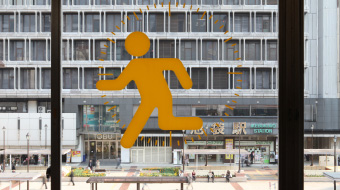
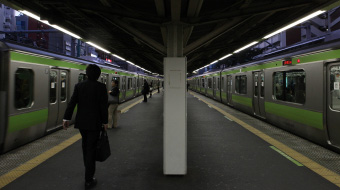
Sponcers & Partners
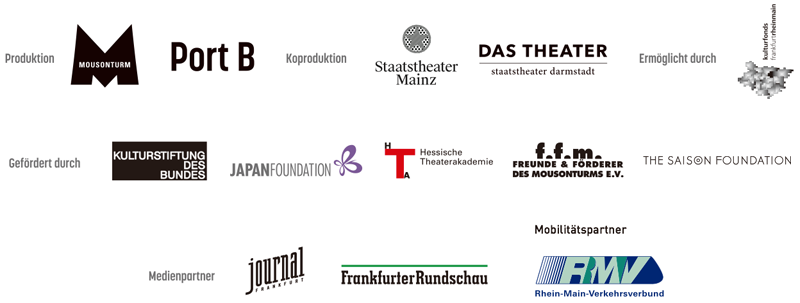
About PortB
Formed in Tokyo in 2002. Creative unit that is made in a different form for each project in the center Akira Takayama. You have deployed installation using the actual city, tour performance, social experimental projects, speech events, such as sightseeing tours, the wide range of activities. In seeking a way is in the underlying question "What is the theater" is also in the activities of any, extend the possibilities of the theater, to connect to the society.
http://portb.net/
 portb.official
portb.official
 @Port_B
@Port_B
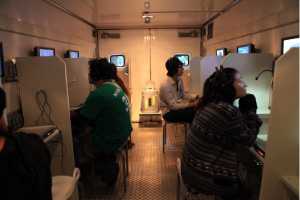
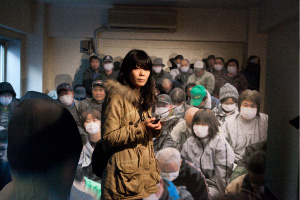
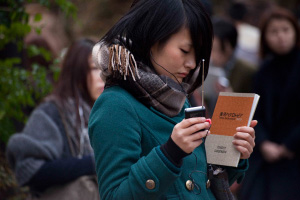
About Akira Takayama
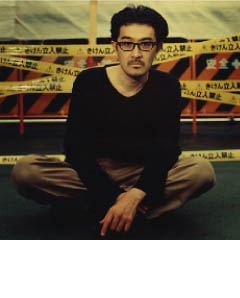
Born in 1969. In 2002, he formed the Port B (Porto Bee). Announced one after another work that goes beyond the framework of the existing theater. Attempts that by the method laid the axis the audience theory, continue to expand the "theater = audience" to society and a real city, update the architecture of the theater, to create a new platform = a "theater 2.0" Some of society have.
Artists
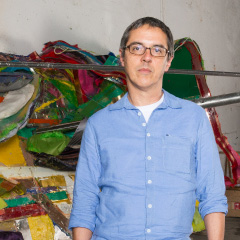
Nuno Ramos
Nuno Ramos (geboren 1960, São Paulo) hat Philosophie an der Universidade de São Paulo studiert und ist als Maler, Zeichner, Bildhauer, Schriftsteller, Filmemacher, Bühnenbildner und Musiktexteschreiber tätig. Als Vertreter Brasiliens hat er 1995 an der Biennale von Venedig, sowie an den Biennalen in São Paulo (1985, 1989, 1994 und 2010) teilgenommen und erhielt 2006 für sein Gesamtwerk von der amerikanischen Barnett and Annalee Newman-Stiftung den Grant Award. Ebenso veröffentlichte er als Schriftsteller u.a. Ó (2008) – für das er den Preis Portugal Telecom de Literatura erhielt.
Nuno Ramos (born in 1960 in São Paulo) studied Philosophy at the Universidade de São Paulo and works today as a painter, drawer, sculptor, author, film maker, set designer and songwriter. He represented Brazil in 1995 at the Venice Biennale, and partook in the São Paulo Biennale in 1985, 1989, 1994 as well as in 2010. In 2006, he received the Grant Award from the American foundation Barnett and Annalee Newman for his complete works. He was also awarded the Portugal Telecom Literature Prize for “Ó”, a book he wrote in 2008.
Mariano Pensotti
Der argentinische Autor und Regisseur Mariano Pensotti (geboren 1973, lebt in Buenos Aires) arbeitete im Bereich Video und Film bevor er sich dem Theater zuwandte. 2010 entstand die Arbeit „Sometimes I think, I can see you“, die das öffentliche Leben einer zeitgenössischen Großstadt poetisch reflektiert.
The Argentinian author and theater director Mariano Pensotti (born in 1973 and living in Buenos Aires) worked in the field of video and film before he turned to theater. In 2010, he created the piece “Sometimes I think, I can see you”, which poetically reflects public life in a contemporary metropolis.
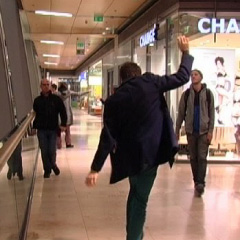
LIGNA
1997 gründete sich die Gruppe LIGNA um die Medientheoretiker, Radio-, Theater- und Performancekünstler Ole Frahm, Michael Hüners und Torsten Michaelsen, die seitdem mit dem Medium Radio im zunehmend kontrollierten öffentlichen Raum experimentieren, oft in Form des von ihnen entwickelten Radioballetts. Die Arbeiten von LIGNA wurden mit internationalen Preisen ausgezeichnet und sind bei Festivals weltweit zu erleben.
In 1997, the media theorists, radio-, theater- and performance artists Ole Frahm, Michael Hüner and Torsten Michaelson formed the group LIGNA. Since then, they have experimented with the medium of radio in the increasingly controlled public space, from which they created their “Radioballet”. The works of LIGNA have been awarded with international prizes and are featured in festivals worldwide.
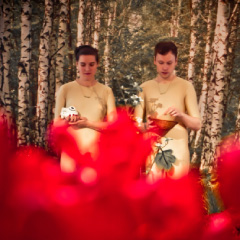
Quast & Knoblich
Hendrik Quast / Maika Knoblich (geboren 1985 / 1986, leben in Berlin) studierten beide u.a. am Institut für Angewandte Theaterwissenschaft in Gießen. Aus ihrem prozessorientierten Arbeitsansatz entwickeln sie in enger Zusammenarbeit mit Experten und regionalen Gemeinschaften vor Ort ihre szenischen, performativen oder installativen Arbeiten. Ihre aufwendigen Projekt-Unikate entwickelten Quast / Knoblich bislang u.a. für das Festival a/d Werf Utrecht, die Sophiensaele in Berlin oder das Künstlerhaus Mousonturm.
Hendrik Quast / Maika Knoblich (born in 1985 / 1986, living in Berlin) both studied, amongst other places at the Institut für Angewandte Theaterwissenschaft in Gießen. From their process-oriented work approach they develop their scenic, performative or installation works in close cooperation with experts and local regional communities. Until now, Quast/Knoblich developed their elaborate unicum projects for the Festival a/d Werf Utrecht, Sophiensaele in Berlin and the Künstlerhaus Mousonturm, and others.
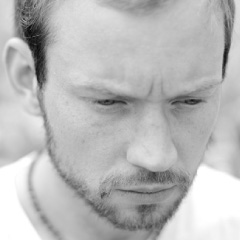
Anton Berman
Anton Berman (geboren 1983 in Moskau, lebt in Deutschland) ist Komponist, Musiker und Sänger. Seit 2000 komponiert er Bühnenmusiken, u.a. für Theater in Bonn, Graz, Hannover, Essen, Aachen, Oldenburg und ab Herbst am Staatstheater Mainz. Anton Berman ist Begründer und Leiter der Internationalen Hochschule für Bikeballet und Balletdesign Istanbul und erhielt 2011 den Ikarus Preis Berlin.
Anton Berman (born in 1983 in Moscow and now living Germany) is a composer, musician and singer. Since 2000, he composes stage music, amongst others, for theaters in Bonn, Graz, Hannover, Essen, Aachen, Oldenburg, and from this autumn onwards at the Staatstheater Mainz. Anton Berman is the founder and director of the International Academy for Bikeballet and Balletdesign Istanbul. In 2011 he was awarded the Ikarus Prize Berlin.
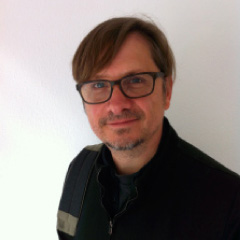
Kondek / Kühl / Weddig
Chris Kondek (geboren 1962 in Boston, lebt in Berlin) / Christiane Kühl (geboren 1966 in Kiel, lebt in Berlin) / Klaus Weddig (geboren 1960 in Clausthal, lebt in Frankfurt). Seit 2004 entwickeln der Videokünstler Kondek und die Journalistin Kühl Theaterarbeiten in lebendiger Auseinandersetzung mit der Finanzwelt. Gemeinsam mit dem Fotografen Weddig dokumentierten sie im Frühjahr im Rahmen des Detroit-Projekts vom Schauspiel Bochum Ciceros "Sieben Strategien gelungenen Überlebens in der geldlosen Gesellschaft" am Ort des Geschehens.
Since 2004, the video artist Chris Kondek (born in 1962 in Boston and living in Berlin), and the journalist Christiane Kühl (born in 1966 in Kiel and living in Berlin), develop theatrical works in a vivid confrontation with the financial world. Together with the photographer Klaus Weddig (born in 1960 in Clausthal and living in Frankfurt and in the frame of the Detroit Project of the Schauspiel Bochum, they documented Cicero’s theses "Sieben Strategien gelungenen Überlebens in der geldlosen Gesellschaft" (Seven Strategies to Successfully Survive in a Moneyless Society) in Bochum.
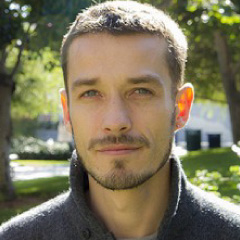
Carlos Motta with Camilo Godoy
Der kolumbianische multidisziplinär arbeitende Künstler Carlos Motta (geboren 1978, lebt in New York) bezieht sich in seinen Arbeiten auf politische Geschichte, um durch Gegenerzählungen ein Bewusstsein für verdrängte Geschichten, Gemeinschaften und queere Identitäten zu schaffen und das Konzept der Demokratie kritisch zu befragen. Mottas Arbeiten wurden vielfach ausgezeichnet und werden weltweit ausgestellt (u.a. Tate Modern London, Museu Serralves Porto, Guggenheim Museum und MoMA New York).
The multidisciplinary Columbian artist Carlos Motta (born in 1978 and now living in New York), refers in his works to political history. By way of counter-narratives, he fosters consciousness for repressed stories, communities and queer identities, as well as critically analyzes the concept of democracy. Motta’s works have received many awards and are exhibited worldwide (among others at the Tate Modern London, Museu Serralves Porto, Guggenheim Museum und MoMA New York).
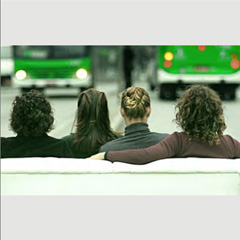
Opovoempé
Das 2004 in São Paulo gegründete Kollektiv OPOVOEMPÉ (Ana Luiza Leão, Christiane Zuan Esteves, Graziela Mantoanelli, Manuela Afonzo und Paula Lopez) erarbeitet Performances, Installationen und strategische Interventionen im urbanen Raum, mit denen es Konventionen und ortsspezifische Eigenheiten auf experimentelle Weise hinterfragt. Dabei konzentriert sich OPOVEMPÉ auf die Möglichkeiten von Bewegung und aktivem Eingreifen in die oft herrschende Apathie und Gleichgültigkeit im öffentlichen Raum und fordert die lebendige Interaktion mit den Zuschauern, um deren Wahrnehmung für die Stadt und die Ge-sellschaft zu verändern.
The collective OPOVOEMPÉ (Ana Luiza Leão, Christiane Zuan Esteves, Graziela Mantoanelli, Manuela Afonzo und Paula Lopez) was founded in 2004 in São Paulo. They develop performances, installations and strategic interventions in the urban space, with which they experimentally question conventions and site-specific peculiarities. Thereby, OPOVEMPÉ focuses on the possibilities of movement and active intervention in the often prevailing apathy and indifference in the public space, inviting lively interaction with the audience to change their perception of the city and society,
Fluchtpunkt (Juliane Kutter & Maria Thrän)
Lukas Sünder & Sitha Reis
Marcus Morgenstern
Staff Credit
Künstlerische Leitung / Artistic Director Akira Takayama
Teilnehmende Künstler / Participating Artists Mariano Pensotti / Carlos Motta & Camilo Godoy / Nuno Ramos / OPOVOEMPÉ (Christiane Zuan Esteves & Roberto Basílio de Matos & Pedro Semeghini & Caio Paduan & Joana Dória) / LIGNA (Torsten Michaelsen & Ole Frahm & Michael Hueners) / Chris Kondek & Christiane Kühl & Klaus Weddig / Hendrik Quast & Maika Knoblich / Anton Berman / Lukas Sünder & Sitha Reis / Matthias Mohr & Oguz Sen / Lars Werneke / Fluchtpunkt (Juliane Kutter & Maria Thrän) / Marcus Morgenstern / Forschungsgruppe Urban Health Games TU Darmstadt / CIBO / Maki Ishii
Grafische Gestaltung / Graphic Design Hironori Oooka / Kei Uchida (Hironori Oooka Office)
Programmierung / Web Programming Jiro Motonaga
Kartographie / Map Design Sayuri Fujii Topographie / Surveying Kohei Fukazawa
Projekt System Ingenieur / Project System Engineering Tatsuki Hayashi
Kuratorische Mitarbeit / Location Research Annette Gloser
Dramaturgie / Dramaturgy Chiaki Soma / Marcus Dross
Dramaturgische Mitarbeit / Dramaturgical Advisers Elisa Liepsch / Anna Wagner
Künstlerische Mitarbeit / Artistic Collaborator Maki Ishii
Künstlerische Assistenz / Assistant Director Saki Tanaka
Dokumentation / Documentation Photographer Masahiro Hasunuma
Projekt-Koordination / Project Coordination Fumiko Toda
Produktionsleitung / Production Management Inga Wagner / Olivia Ebert
Produktionsassistenz / Production Assistant Teresa Bernauer / Caroline Brendel
Mitarbeit Produktionsleitung / Production Management Collaborator Carsten Schrauff,
Praktikanten / Interns Lars Sellien, Thekla Stobbe, Anja Sauer
Freiwillige Mitarbeiter / Volunteers Kristijan Balta / Annika Böndgen / Timo Cromm / Eva Döhne / Oliver Franke / Milena Kan / Jasmin Klotz / Lisa Kreutzer / Sofie Luckhardt / Anika Marschall / Marvin Otto / Katharina Polley / Jessica Pulver / Lisa Richter / Shun Takeishi / Marie Schaarschmidt / Katja Schaffer / Alexej Ulinici / Dennis Vetter / Antje Zöchling
Technische Direktion / Technical Director Michael Schlund
Presse- und Öffentlichkeitsarbeit / Communication office Gabriele Müller / Julia Kretschmer / Elke Lötterle
Verwaltung / Administration Martina Leitner / Bernd Steuernagel / Katja Liebetruth /
Intendant und Geschäftsführer / Artistic and Managing Director Matthias Pees
Produktion / Production Port B / Künstlerhaus Mousonturm Frankfurt am Main GmbH
Koproduktion / Co-Production Staatstheater Darmstadt / Staatstheater Mainz
Gefördert von der / Funded by the Kulturstiftung des Bundes (Geman Federal Culture Foundation)
Ermöglicht durch den / Enabled by Kulturfonds Frankfurt RheinMain
